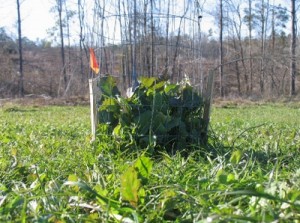Best food plots for deer
Best food plots for deer
In conjunction with those efforts, we can set the table by introducing the best food plots for deer. Today, it isn’t hard to find good information on how to plant a food plot. So, lets look at a few things that can set our plots above the rest.

We spoke earlier about deer desiring a feeling of safety. This is especially important if we expect a mature buck to use the best food plots for deer during daylight. To accomplish this, I have found that food plots are best when kept under 5 acres in size, completely surrounded by protective cover. Many times, these locations do not naturally exist. Thankfully, they can be created by clearing openings in the woods, closing off corners of fields by planting staggered rows of trees or even by sealing them by planting corn as a barrier.
Best food plots for deer are diverse
The next consideration is what to plant. Almost every planting has a phase of growth where it’s most desired by deer. Because of that, rarely is one planting the best option throughout the entire season, let alone all year. Along with that, I firmly believe that deer crave diversity in their diets. Add all of this together and no one choice is the best.
To produce the greatest drawing power, I have found that having three plantings in one area works best. A combination that works well for me is one acre of Antler King’s Trophy Clover, one acre of their Fall/Winter/Spring and three acres of soybeans or corn. With that combination, I have a location that offers great early, mid and late season appeal. As far as choosing between the corn and beans goes, I let the other crops in the area decide which I select. Whichever is in most abundance, I plant the other.
Best food plots for deer change with calendar
A great example of how deer gravitate to the best food plots for deer at various growth stages, particularly when they are in the shortest supply was the bean plot at the beginning of this piece. Deer love eating the leaves of soybeans when they are still green. Because of our growing season, rarely are soybean not already either changing color or completely brown by the start of bow season. To counteract that trend, I planted those beans in July, far later than normal. There was a risk that the needed rain wouldn’t come, but the reward was the only green beans in all of Buffalo County. For the first two weeks of season, you couldn’t keep the bucks from fighting over them.
Conclusion
When done properly, habitat improvement efforts can truly transform your hunting ground into utopia. The key is doing it in a manner that benefits both the deer and us. When planning the best food plots for deer, why not force deer through the easily hunted funnel? Better still, why not treat the oaks around the food plot, plant some apple trees along the edge, increase the browse production on one side and slap a bedding area on the other. The more reasons we give deer to bed in certain areas and travel through another to get to concentrated food sources, the better our chances are of harvesting them.

I did not shoot a buck on that bean plot. However, I did take one on that farm. I took him as he traveled from it to another food source. By tying our improvements together, having one feed off of the other, our chances of intercepting that buck increases dramatically.
Get to work. It’s time to start the mental part of planting the best food plots for deer.

